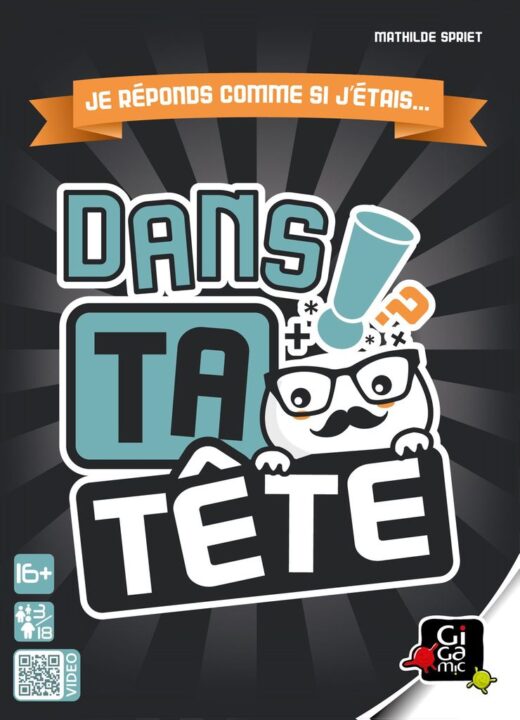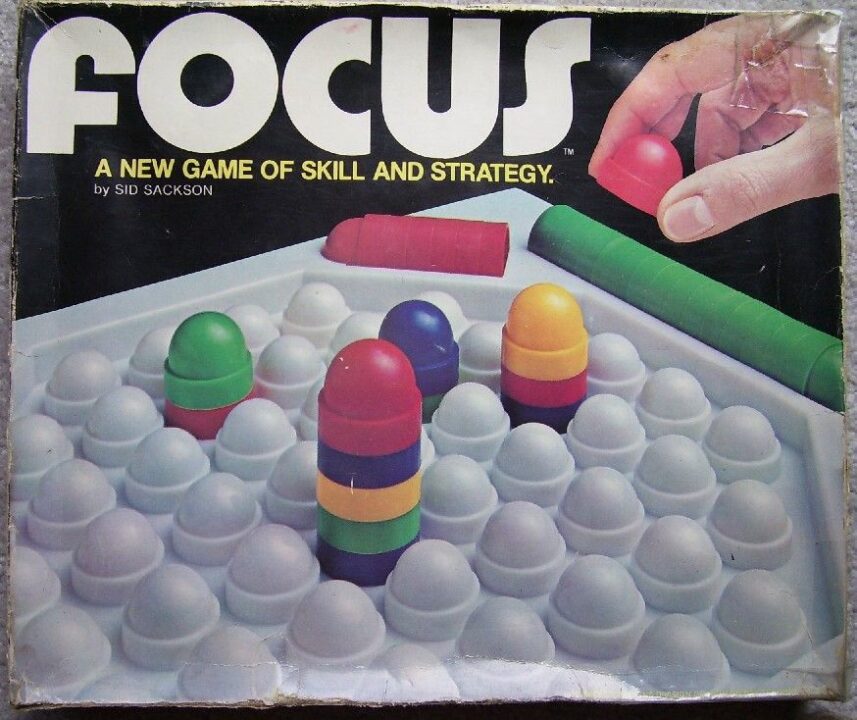Let me tell you, reviewing board games is a dangerous job. One time I lost three hours and a friendship to an Uno grudge match. But today, I’m still here (and still friends with most people), bringing you a review of Focus. I’ve spent way too many nights hunched over that crazy hexagon board, trying to outmaneuver my pals. So, is this a strategic classic you need in your life, or should you save your coffee table space for something else? Read on to find out!
How It Plays
Setting up
Set up Focus by giving each player their colored pieces and placing them on the board in the starting pattern. Make sure nobody cheats and grabs extra! The board has hex spaces, so double check your stacks are neat. Keep the rules sheet handy unless you want to argue like my Aunt Pat at Christmas.
Gameplay
On your turn, move one of your stacks—if you control the top piece. You can move as many spaces as the number of pieces in your stack. If you land on another stack, just pile them up. If any stack goes over five pieces, take the extra pieces off the bottom. If they’re yours, hooray! You keep them for later. If not… well, tough luck.
Winning the game
The game ends when no more moves can be made. Count up your captured pieces. The player with the most wins. If you end up tying, just declare a thumb war like my group always does. Or play again—Focus is fast enough to give it another go.
Want to know more? Read our extensive strategy guide for Focus.
How Focus Rules (and Sometimes Confuses): Learning the Game
Let me tell you, when my buddy whipped out Focus for game night, I expected a rules booklet thicker than my cousin’s meatloaf. I was wrong. Focus, brainchild of legendary designer Sid Sackson, actually shocked me with how simple the instructions looked at first glance. The game has you moving stacks of colored pieces around a round board, with the goal of capturing your opponents’ pieces. That’s it. No mysterious tokens, no cards hiding complex secrets. Just stacks and movement. So I thought, “Easy peasy, lemon squeezy.”
But here’s the twist: Focus is a sneaky beast. The learning curve is like a calm beach—flat and sunny for the first ten minutes, then suddenly you’re swept into deep water by a riptide of tactical headaches. You can move a stack, but only as high as the number of pieces in it. You can absorb stacks, but only the top piece’s color tells you who controls them. My friend Gary still looks haunted by the moment he realized he’d been setting me up for a win every move. Understanding the rules took us about ten minutes, but mastering them? I’m still not sure I’ve done it—ask me again in ten years.
Honestly, Focus is great for rookies and veterans alike. The rules are tight, the manual is clear (even with the old-fashioned black-and-white illustrations), and nobody spent their night buried in FAQs. My only gripe? The clarity is great, but the depth sneaks up on you fast. If you’re expecting a no-brainer, well, Focus has some surprises.
Stay tuned, because next up I’ll reveal whether Focus will have you making friends— or enemies— with its player interaction and strategy!

Player Interaction and Strategy Depth in Focus
Focus is one of those games that transforms your game night into a wild mental wrestling match. If you like staring your opponents in the eyes while plotting their doom, this game delivers. My friends and I sat around the table, each planning our next sneaky move, but also trying to guess everyone else’s. It was like chess, but if chess pieces kept morphing and merging into MegaChips (my friend Dave’s term, not the official one). Every turn, you must decide to stack, move, or gobble up chips, all while keeping an eye on your opponents’ piles. You can block, you can attack, or you can lull everyone into a false sense of security before springing your trap. No one’s safe for long, and things get personal fast.
Let me tell you, alliances in Focus last about as long as my New Year’s resolutions. Someone will inevitably betray you (usually my mate Karen, she’s ruthless), and it’ll flip the whole table on its head. The depth in Focus comes from predicting moves, balancing aggression with defense, and knowing when to strike. It rewards careful planning and bold bluffs. If you love games with spicy interaction and mind games, you’ll have a blast. There’s no hiding from the drama, and I love that.
Before you buy Focus, you should know what you’re getting into—let’s see if the game pieces and board look as sharp as my mother-in-law’s tongue at Christmas.
Component Quality and Board Design in Focus
Let’s get hands-on—literally. Every time I play Focus, I become a bit of a magpie, drawn in by those chunky, colorful pieces and that delightfully odd board. The pieces are stackable discs, sturdy enough to survive my infamous “board rage” moments when I lose (which, for the record, is almost never). The plastic feels thick, not like those cheap tokens you get in disappointing kids’ games, so Focus passes the durability test with suspiciously flying colors.
The board design is a quirky hexagon, which gives off real “alien landing pad” vibes. I tried balancing a cup of coffee on it for science; it failed miserably as a coaster but serves its actual purpose perfectly. The movement zones are easy to spot, thanks to the clear markings, and it’s small enough to fit on a crowded kitchen table—ideal for those of us who see “clean table” as purely theoretical.
Everything about the physical parts just works, even if the color scheme looks like it was chosen by a committee of circus clowns. At least you’ll never mix up whose pieces are whose (unless you’re playing after midnight). I haven’t seen any warping or fading after dozens of plays, so this game should outlive your third pet goldfish.
Up next, let’s see if Focus sticks around on game night, or if it gets lost in the dusty closet of forgotten fun. Stay tuned for tales of replayability and the eternal quest for “just one more game”!
Replayability and Staying Power: Will Focus Keep Your Game Nights Fresh?
If you’re like me, you don’t want to buy a game that just gathers dust on the shelf after two plays. I’ve lost count of how many games my friends and I have left behind because the spark fizzled out fast. Thankfully, Focus does better than that! This game keeps pulling us back for one more round. There’s something about the way strategies change every time that makes it hard to walk away.
See, Focus is all about adapting and out-thinking your opponents. Once you start feeling cocky with your favorite move, someone will flip the script and leave you staring at a sad stack all alone. The shifting stacks and sneaky moves mean no two sessions play exactly the same. My friend Matt has a weird gift for surprising us, and even he can’t win every time. That keeps things spicy!
One thing I did notice after a ton of plays: Focus shines brightest with people who like to think. If your group loves chaotic, party-style games, this one might not land as well. But if you get a kick out of planning ahead and using a bit of brainpower, you’ll probably want to play again and again. My group has made Focus a regular feature—though it’s also inspired some heated debates about the meaning of “friendly rivalry.”
Bottom line? Focus offers strong replay value, especially for fans of brain-busting abstract games. If you want something that stands the test of time and keeps your friends plotting, I say give Focus a shot. It’s earned its place on my table. I’m not saying it will fix your friendships, but it might just make them a lot more interesting!
Conclusion
Alright, folks, that wraps up my Focus review! After wrangling my friends for more games than they’d care to admit, I can say Focus is a smart and thinky game I keep coming back to. The rules won’t make your brain explode, but there’s enough depth to make you feel clever—or silly when your brilliant move backfires. The chunky components and wild hex board are a plus, but it’s the constant plotting and sneaky moves that kept us talking trash all night. If you want a tactical challenge with fair mechanics, Focus is a great pick. Just don’t expect wild luck swings or party vibes. Thanks for reading—and remember, if you lose, it’s totally the board’s fault, not yours!


